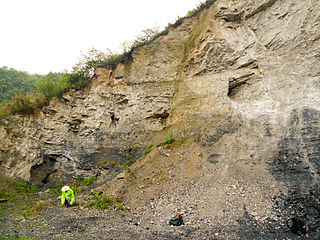Creation Corner
Precambrian late embryos?

A Chinese-American team may have discovered, if not a “Precambrian rabbit,” the next best thing: Precambrian embryonic fossils showing the kind of development only multicellular organisms show. The team leaders do not know whether they found an early plant or animal. But their find, if it holds, threatens to shake the foundations of biological evolution.
What the team found

A purported Ediacaran embryo contained within an acritarch from the Doushantuo formation. From the journal Nature. Click image to see source.
The team members come from Virginia Polytechnic Institute and State University (Blacksburg, Va.) and the Chinese Academy of Sciences. Two days ago the journal Nature published their letter. In it they describe their study of spheroidal fossils in a mineral called phosphorite in the Ediacaran Doushantuo Formation in southern China. Five other teams had published their own interpretations of these fossils. The fossils have been under study since 1998. Other teams have suggested they might be “sulphur-oxidizing bacteria, unicellular protists, mesomycetozoean-like (sic) holozoans, green algae akin to Volvox, and blastula embryos of early metazoans or bilaterian animals.” But in the Nature letter of two days ago, the team under Lei Chen and Shuhai Xiao said the earlier teams overlooked something. Lei Chen and Shuhai Xiao found fossils that looked much like late-developing blastulae (an early embryo). In fact they showed evidence that germ cells (for reproduction) and somatic or body cells were already showing the first differences of form one sees in a developing embryo. The team even found evidence of cells programmed to die. This does not happen in one-celled micro-organisms.
The problem: conventional radiometric dating assigns an age of 600 million years to the Ediacaran Doushantuo Formation. But by the same convention, the Cambrian Explosion happened 545 million years ago. In other words, these are Precambrian late-developing embryos.
The on-line magazine Inquisitr covered this story yesterday (September 25). But neither Inquisitr nor the Chen-Xiao team seem to understand how important their discovery is.
A Precambrian rabbit?
[ezadsense midpost]
The late J. B. S. Haldane once answered the question of what could shake his confidence in conventional biological evolution. Among other things, he said “Precambrian rabbits” would so shake his confidence. Ten years ago, Richard Dawkins admitted, to C. Wallis at Time magazine, that mammalian fossils in Precambrian rocks would “blow evolution out of the water.”
NBC News tried to say this find would strengthen, not weaken, the case for biological evolution. (Or at least, that’s how Inquisitr read the NBC report.) Dr. Xiao suggested these blastula-like fossils could be transitional forms between one-celled life and the earliest animals (or plants). In other words, they are the Missing Links between one-celled and many-celled life. But these are embryos, not fully formed cubs or sprouts or other “young life” forms. To call these “Missing Links” one must bring back the old argument that “ontogeny recapitulates paleontology.” In other words, these blastula-like forms were “adults” once and are embryos today. Remember Ernst Haeckel? He tried to make that argument. He drew what he said were successive stages in the development of human beings. Those stages looked like more “primitive” animals. Except they looked a little too much like those “primitives.” Because Ernst Haeckel fudged the drawings. All authorities acknowledge this today. And that forgery, and the finding out of it, severely weakens the “ontogeny recapitulates paleontology” case.
So Dr. Xiao has not found the Precambrian rabbit. But he has found a Precambrian embryo. No convention of biological evolution can explain this. Xiao almost certainly does not infer all his find implies. But that does not make the find any less important, or less threatening to the evolutionary paradigm.
Reprinted from examiner.com
[ezadsense leadout]
Terry A. Hurlbut has been a student of politics, philosophy, and science for more than 35 years. He is a graduate of Yale College and has served as a physician-level laboratory administrator in a 250-bed community hospital. He also is a serious student of the Bible, is conversant in its two primary original languages, and has followed the creation-science movement closely since 1993.
-

 Civilization4 days ago
Civilization4 days agoDC Pipe Bomb Arrest Raises Questions About Christopher’s Wray’s FBI
-

 Civilization5 days ago
Civilization5 days agoThe Legal Logic Behind U.S. Operations Against Narco-Terrorist Networks
-

 Executive5 days ago
Executive5 days agoNewsom’s ‘National Model’ for Homeless Wracked by Fraud
-

 Executive2 days ago
Executive2 days agoWaste of the Day: Obamacare Failed Test, Approved Fraudulent Subsidies
-

 Executive4 days ago
Executive4 days agoWhen You’re in a Hole, Stop Digging
-

 Education3 days ago
Education3 days agoWaste of the Day: Taxpayers Subsidize Football Coach Severance
-

 Civilization3 days ago
Civilization3 days agoPence Calls on Trump To Fire RFK Jr Over Abortion Drug
-

 Civilization2 days ago
Civilization2 days agoWSJ’s Fearmongering Doesn’t Survive Contact With Evidence













[…] from examiner.com and from Conservative News and […]
[…] Precambrian late embryos? […]
“No convention of biological evolution can explain this.”
Huh? Sorry, I don’t even begin to see why this is supposed to be a problem for evolution. Multicellular life was well established long before the Cambrian. We’ve known this for decades. This is a very exciting discovery, but it isn’t upsetting any paradigms.
I don’t think even that NBC source would agree with you. They’re out there saying, “Look! They’ve found the Missing Link!” Why would that matter if “milticellular life” and especially germ-soma differentiation were established as much as 55 million years ahead of the Cambrian Explosion?
The fact they’re talking about “missing links” just sums up why their opinion is irrelevant. Seriously, Precambrian multicellular life is no big deal. The Ediacaran fauna was multicellular. There were triploblasts in the late Ediacaran period – Kimberella is the best known from fossils, and it was widely distributed 15 million years before the beginning of the Cambrian.